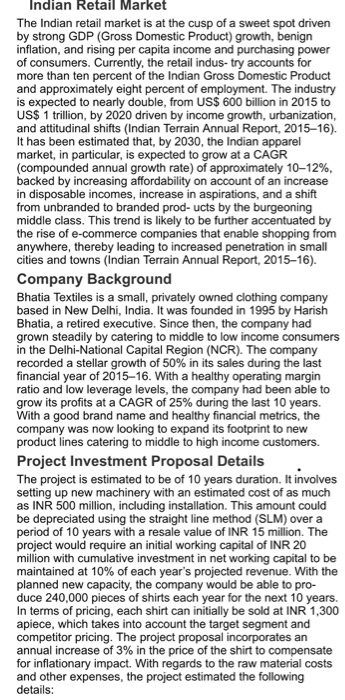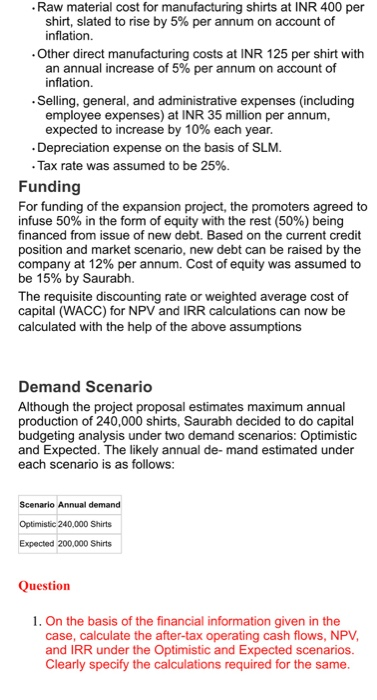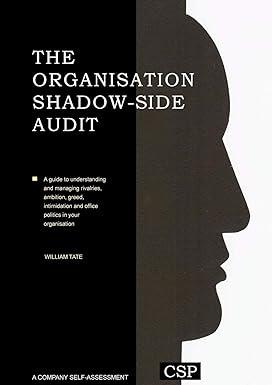Indian Retail Market The Indian retail market is at the cusp of a sweet spot driven by strong GDP (Gross Domestic Product) growth, benign inflation, and rising per capita income and purchasing power of consumers. Currently, the retail indus- try accounts for more than ten percent of the Indian Gross Domestic Product and approximately eight percent of employment. The industry is expected to nearly double, from Us$ 600 billion in 2015 to US$ 1 trillion, by 2020 driven by income growth, urbanization, and attitudinal shifts (Indian Terrain Annual Report, 2015-16). It has been estimated that, by 2030, the Indian apparel market, in particular, is expected to grow at a CAGR (compounded annual growth rate) of approximately 10-12%, backed by increasing affordability on account of an increase in disposable incomes, increase in aspirations, and a shift from unbranded to branded prod- ucts by the burgeoning middle class. This trend is likely to be further accentuated by the rise of e-commerce companies that enable shopping from anywhere, thereby leading to increased penetration in small cities and towns (Indian Terrain Annual Report, 2015-16) Company Background Bhatia Textiles is a small, privately owned clothing company based in New Delhi, India. It was founded in 1995 by Harish Bhatia, a retired executive. Since then, the company had grown steadily by catering to middle to low income consumers in the Delhi-National Capital Region (NCR). The company recorded a stellar growth of 50% in its sales during the last financial year of 2015-16. With a healthy operating margin ratio and low leverage levels, the company had been able to grow its profits at a CAGR of 25% during the last 10 years. With a good brand name and healthy financial metrics, the company was now looking to expand its footprint to new product lines catering to middle to high income customers Project Investment Proposal Details The project is estimated to be of 10 years duration. It involves setting up new machinery with an estimated cost of as much as INR 500 million, including installation. This amount could be depreciated using the straight line method (SLM) over a period of 10 years with a resale value of INR 15 million. The project would require an initial working capital of INR 20 million with cumulative investment in net working capital to be maintained at 10% of each year's projected revenue. With the planned new capacity, the company would be able to pro- duce 240,000 pieces of shirts each year for the next 10 years. In terms of pricing, each shirt can initially be sold at INR 1,300 apiece, which takes into account the target segment and competitor pricing. The project proposal incorporates an annual increase of 3% in the price of the shirt to compensate for inflationary impact. With regards to the raw material costs and other expenses, the project estimated the following details: .Raw material cost for manufacturing shirts at INR 400 per shirt, slated to rise by 5% per annum on account of inflation .Other direct manufacturing costs at INR 125 per shirt with an annual increase of 5% per annum on account of inflation .Selling, general, and administrative expenses (including employee expenses) at INR 35 million per annum, expected to increase by 10% each year. .Depreciation expense on the basis of SLM. .Tax rate was assumed to be 25%. Funding For funding of the expansion project, the promoters agreed to infuse 50% in the form of equity with the rest (50% ) being financed from issue of new debt. Based on the current credit position and market scenario, new debt can be raised by the company at 12% per annum. Cost of equity was assumed to be 15% by Saurabh The requisite discounting rate or weighted average cost of capital (WACC) for NPV and IRR calculations can now be calculated with the help of the above assumptions Demand Scenario Although the project proposal estimates maximum annual production of 240,000 shirts, Saurabh decided to do capital budgeting analysis under two demand scenarios: Optimistic and Expected. The likely annual de- mand estimated under each scenario is as follows: Scenario Annual demand Optimistic 240,000 Shirts Expected 200,000 Shirts Question 1. On the basis of the financial information given in the case, calculate the after-tax operating cash flows, NPV, and IRR under the Optimistic and Expected scenarios. Clearly specify the calculations required for the same








